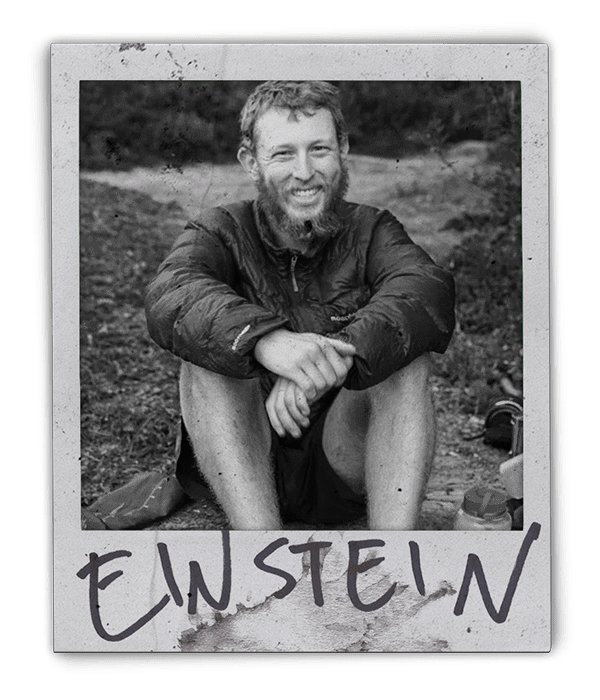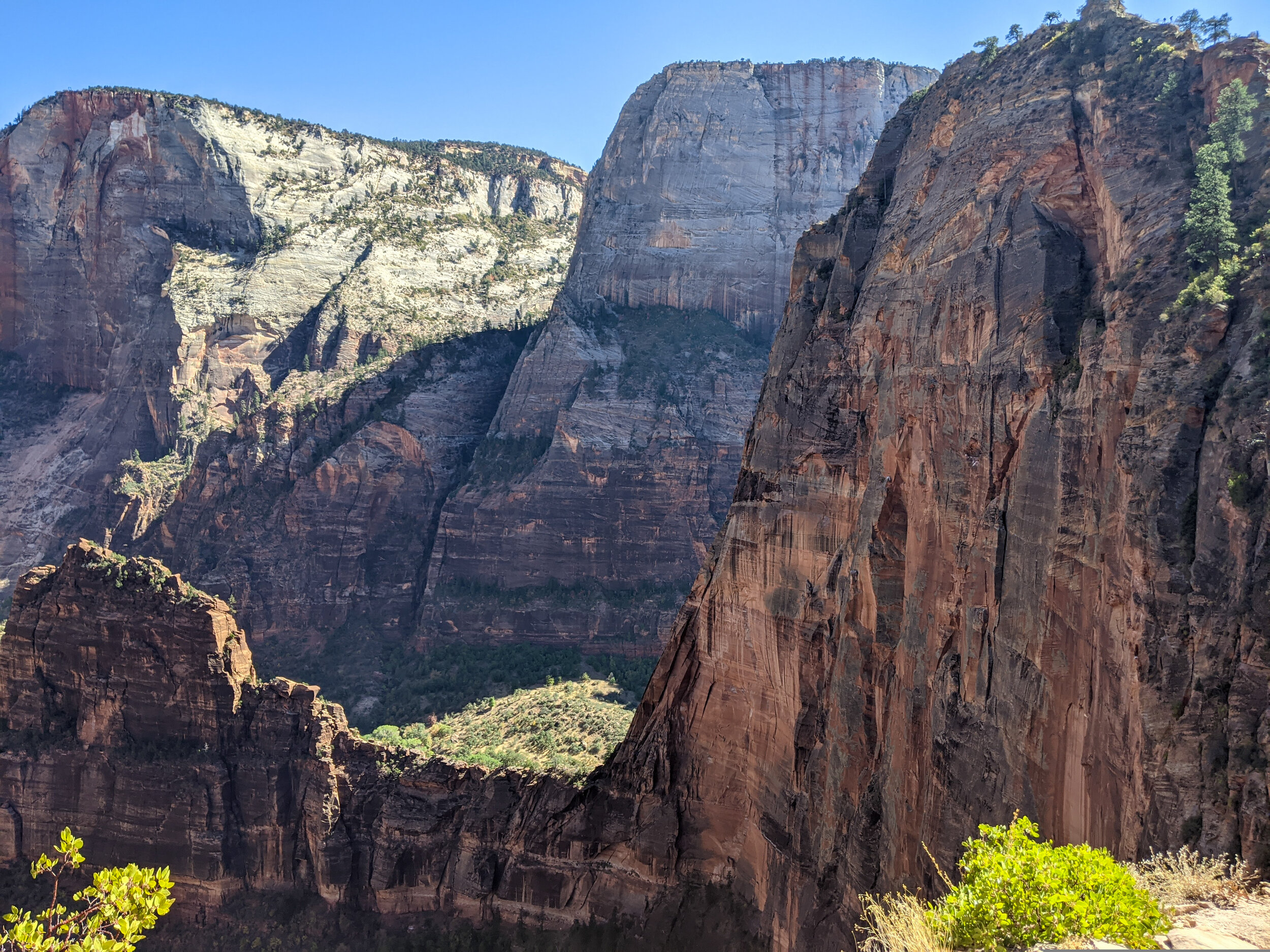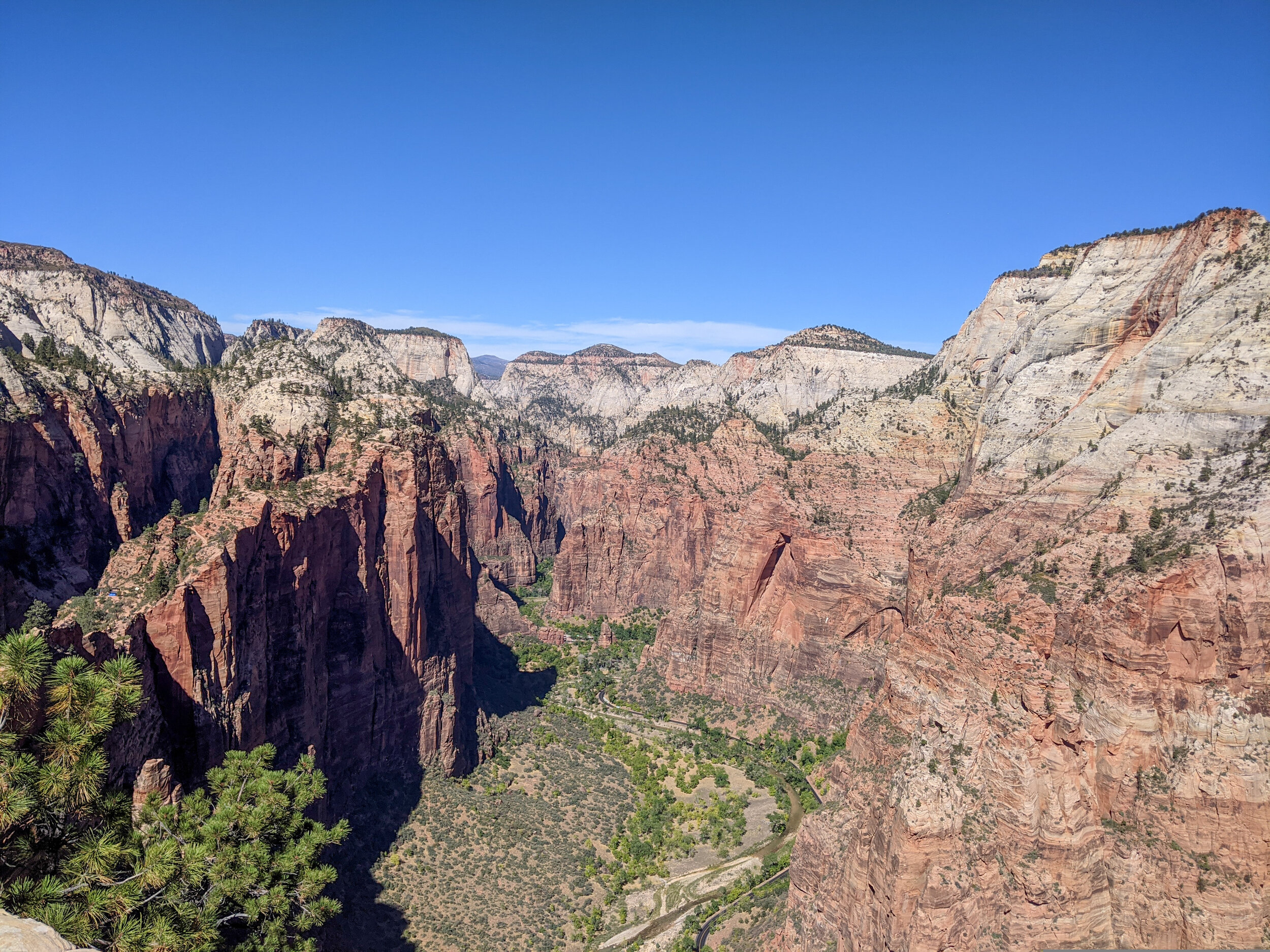The Guilt of Ecotourism: A Utah Mighty Five Photo Essay

The rare photo of Delicate Arch with only one person littered on the landscape
I sped ahead of my comrade when I knew the end of our hike to Delicate Arch was only about 200 meters ahead, a turn around the next tall slab of sandstone just to my right. I remembered it rather vividly from my first trip to Arches National Park, a little over three years earlier in June of 2017 with a different friend. As I rounded the bend, the late morning light shone a beam directly through the arch. It was that classic, perfect lighting, scenic, photo opportunity anyone visiting Arches hopes to get. Equipped with my Canon EOS M50 and feeling confident at the end of a week of improving my photography skills while exploring Utah’s “Mighty Five,” I was all set to get that perfect photo. There was one problem. The natural amphitheater that hundreds of millions of years of wind and rain formed in the sandstone around the Delicate Arch was seemingly at full capacity. I estimated at least 300 people filled up the bowl; there was a solid 50-person long line to take photos under the arch. I sat down, disappointed but not surprised.
The parking lot at Wolfe Ranch had already been full at 8:00 AM, and we had driven a mile further down the road to the excess lot before walking back to the trail head. The 1.5 mile-walk itself was a veritable traffic jam. Confusion ran high amongst hikers who clearly had no idea how yielding, passing, and general hiker etiquette worked. I sat at the top of the amphitheater as my mate caught up to me. This was his first time in Arches, as each of our visits to the Utah parks had been his first that week, and he clearly didn’t mind the crowds; perhaps he didn’t even notice. He was just excited to see the iconic arch. I was happy; I was mostly here for him after all. I had been to all five parks we had visited on that first trip three years earlier. This one was just me showing him around one of my favorite regions: Southern Utah.
As he marveled at the sight of the arch, I sat in silence, trying to focus on what I was feeling. It was hard; shrieks, screams, laughter, loud, and fully audible conversations echoed in my ears. The irony of being out in nature - a place I’ve always gone to gain more resonance from my own thoughts - and not being able to due to the noise of other people was not lost on me. Of course, the lack of difference between my being there and everyone else’s was also not lost. So I sat and asked myself three questions.
Why am I upset right now? Do I have a right to be? What makes Delicate Arch different from Disneyland? If I were there, the crowds would be an assumed part of the experience. Why aren’t they assumed here, and should they be?
What can be done about the issue here? How do we solve overpopulation at our national parks? How do we effectively manage the growing trend of ecotourism?
Probably 49 out of every 50 people I saw at every park for the whole week were white. How do we fix this issue and make visiting public lands more accessible, normal, and safer for minorities?
I’m not the only person asking these questions, nor am I asking them promptly. These are all issues that the outdoor community has been asking themselves about for a bit now. But in light of my trip last week, I’d like to use this space to muse some thoughts on them and hopefully start a dialogue with our readers on potential solutions here. I’ll also share some photos from my trip to Utah and my personal thoughts on me as an ecotourist in 2017 and this most recent trip.
A Natural Bridge in Bryce Canyon - complete with its famous spires on top
Part of the rock barrier that makes up Capitol Reef; two tourists dotting the foreground
The Price of Exploring
Landscape Arch
In June of 2017, one of my best friends and I flew out to Phoenix, rented a car, and spent a week driving all over Northern Arizona and Southern Utah visiting National Parks. It was a trip that probably hundreds of thousands of people take almost identically every year. The trip I recently took was practically identical. I didn’t know it at the time, though. She was eager to see the famous “Mighty Five” National Parks of Utah - Zion, Bryce Canyon, Capitol Reef, Canyonlands, and Arches. A year removed from my first thru-hike of the Appalachian Trail and craving adventure, I was totally game.
Moonlight Buttress dominates the stunning scenery of Zion
We decided to split an annual National Park pass for the trip, and I remember being blown away by how cheap it was. $90.00 for a year of unlimited visits to any National Park in the country. The price remains the same three years later, even with inflation and increased visitation. Although a vehicle fee to enter a park is $30.00, I’d have to imagine a good chunk of people visiting parks - particularly the Utah Mighty Five, where they are likely seeing 3-5 in one week - are purchasing the America the Beautiful Pass.
This is an inherently good thing. Creating a paywall to control the crowds in our parks doesn’t seem like the right answer. If the park service hypothetically ditched the annual pass and doubled entry rates at their most visited parks, the numbers would surely go down. Here’s the thing, though - so would the revenue. The National Parks (along with most public lands in this country) have been in a funding crisis since the current administration was elected in 2016. That’s the thing about those vast crowds - they mean the park is surviving. As I sat by the Delicate Arch, I tried to remind myself of this.
A lone spire in Bryce Canyon, with many of its compatriots behind it
What to do?
Where is this ecotourism coming from? The COVID-19 pandemic this year indeed is responsible for records being blown away (Yellowstone smashed it’s September record with nearly a million visitors in September of this year). Let’s not focus on that, though. On my first Utah Might Five trip in 2017, the crowds were just as massive as they were this year. No pandemic, no sudden inability to have “indoor” vacations. Still the same lines of people on the trails, bumper-to-bumper traffic on park roads, litter, noise, overcrowded shuttles, and overall challenging experience because of it.
I was so excited about this Milky Way capture above Bryce Canyon that I shared it on Instagram the next morning. Why did I feel the need to do that?
We’re getting about 50 million more national park visits every year than we were just a decade ago. As the internet takes over our lives, geotagging, social media, and the FOMO that comes with it are things I think about. Would everyone be dying to go get that Angel’s Landing photo if they hadn’t seen their favorite influencer up there the summer before? I think not. On a hike in Canyonlands along the rim of the Island in the Sky, I looked out over the vast canyon created by the Colorado River, splaying down to its confluence with the Green. I thought about my own tendencies to share photos on social media from all my trips. In 2017 I didn’t have an Instagram yet, but the friend I was traveling with made sure to post one photo every day. On my trip this year, I probably put up two to four Instagram stories every day. How many people will I overcrowd the parks with next year?
Juniper, Canyonlands
Prickly Pear, Capitol Reef
We are all entitled. None of us are.
Some parks have already implemented time control systems. You simply have to sign up for a time slot to hike a certain trail or go to a particular area. Shenandoah National Park is the latest to consider it now that it’s consistently getting 2 million visitors a year. It’s a frustrating reality to confront. When I’m going out into a beautiful place like Zion, the last thing I want to have to worry about is some timeslot. Concerning myself with getting there at an exact time and having some sort of deadline to finish my hike sounds underwhelming, inauthentic. Climbing out of Bryce Canyon and waiting in a line of 40+ hikers, I realized maybe there aren’t any other options.
Zion Canyon, from Angel’s Landing. Is the view worth the Disneyland level lines on trail?
I had a strange feeling of guilt the entire week this time around. Every time I had a moment like the one on Delicate Arch - and trust me, there were plenty - I was met immediately with the odd, not-so-good feeling of knowing I was no different than any of the other people there. I was no more deserving of my “perfect moment” at Delicate Arch than anyone else. We are often quick to develop a sense of entitlement when we achieve things in the outdoors. I am well aware of all of my outdoor experiences, and I so easily fall into a subconscious feeling that I am more deserving of exploring the outdoors. It happens to everyone. I overheard day hikers walking back down from Angel’s Landing eagerly bragging and showing off to any uphill hikers that would listen. They had done it. You’ll never believe how amazing it is up there. Yeah, it’s pretty hard, but it wasn’t a problem for me. Why are we going on these hikes? Why do we go to these places? Is it merely for bragging rights, Instagram photos, and a sense of accomplishment? Sometimes I fear it is.
Diversity. Do we actually care?
I got into a heated argument with my friend as we drove down the main drive on Canyonlands, out to the Great Overlook. He presented the classic, tired, naive conservative view that white privilege is over. Affirmative Action fixed it, and minorities have nothing to complain about anymore. As I racked my exhausted brain for a counterargument to this, one that I am just fucking tired of having to argue against, I realized it was right in front of me. I asked him how many non-white people he had seen over the last few days at all of the National Parks we had visited. He was stumped. While only a small example of the vast problems facing our country regarding providing equal opportunity for all, I began to resonate with this observation.
Crows adorn a “goblin” in Goblin Valley State Park. A good side trip to take if you are traveling through the Utah Might Five.
For the final few days, I couldn’t stop noticing all the white people. I, of course, was one of them. It’s standard on every thru-hike. Everyone looks like me. This past summer, at the height of the Black Lives Matter movement, the outdoor community quickly got on board. Organizations were donated to. Specific, black, and minority thru-hikers were followed by the thousands on Instagram. White thru-hikers littered their Instagram stories with messages of equality and inclusion. Follow this person. Support this cause. Do this. Do that. The virtue-signaling was a little disgusting. Here we are a few months later. The outdoor community isn’t really talking about it anymore. But you can walk around any of the Utah Mighty Five on any given day and struggle to see anyone who isn’t white. Thru-hiking is a niche thing. Of course, we want every facet of our community to be diversified, but I can’t help but feel that we’ve got to focus on diversifying visitation to things like National Parks. That’s the typical trip. That’s what an every day American should be able to do. How do we do it? How do we make them feel more safe and inclusive? Much of it begins with solving more fundamental problems for minorities.
Chimney Rock, Capitol Reef
I think about why I love the outdoors, explore national parks, and go on thru-hikes. From a young age, I was exposed to extracurriculars that introduced me to hiking, backpacking, cycling, swimming, etc. This was entirely because of my socioeconomic background. I had these opportunities because I was white. All of the people I saw exploring Utah during that week likely had similar opportunities because of their whiteness. If you care about diversifying the outdoors, understand we must diversify every other facet of our lives in unison with that effort.
A sunset over public lands. How lucky we are to have access to spots like this. How will we save them for future generations?
I don’t really have an inspiring conclusion. As the pandemic we are still in reaches its most alarming numbers, we are near a chaotic national election with everything seemingly at stake. It saddens me that a week spent exploring the beautiful scenery of Southern Utah didn’t even really provide me an escape. How do we get back to that? How do we turn nature into the serenity it once was? Where do we go for peace if it’s not even into the middle of the desert? I hope if you’ve read this and are someone who cares about the preservation of our public lands, backcountry, and mother nature as a whole, these are questions you’ll ask yourself. I hope you’ll ask someone else as well.












